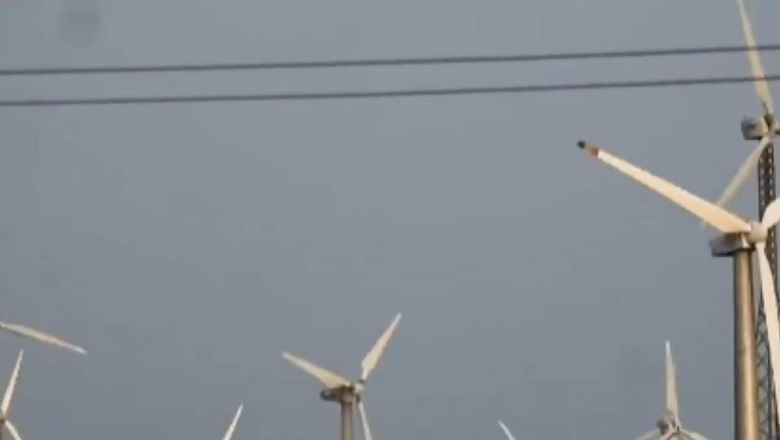
views
The sum of existing wind targets of nearly 70 countries is not enough to achieve tripling of the wind energy capacity by 2030, even though it can very well double it, according to the latest report released by global energy think tank Ember.
The analysis shows that 2030 national wind targets from 70 countries and one region add up to 2,157 GW. It has increased by 2.4 times compared to 901 GW in 2022. But meeting the 2030 target of tripling wind capacity (2,742 GW) would require an additional 585 GW. “Governments are lacking ambition on wind, and especially onshore wind. Wind is not getting enough attention, even though it provides cheap electricity and complements solar,” said Dr Katye Altieri, electricity analyst at Ember.
CHINA FAR AHEAD, OTHERS HAVE WORK TO DO
The report analysed 2030 national wind targets in 70 countries plus the European Union (EU), which collectively represent 99% of current global wind capacity. The analysis suggests that global wind capacity will double — mostly because China is expected to over-deliver and the rest of the world in aggregate is on course to under-deliver.
At COP28, the last UN Summit, countries agreed to triple the total renewable energy capacities by 2030. The International Energy Agency (IEA) welcomed the commitment, terming it the “single most important lever” to cut emissions this decade and keep the 1.5℃ goal within reach. According to the IEA, to meet the tripling renewables capacity goal, wind capacity should also at least triple.
However, the latest industry forecasts suggest that China is set to triple wind capacity by 2030, and it will continue to account for over half of global wind additions every year from 2024 to 2030. However, the US and India have a large gap between forecast installations and what is needed to meet their current 2030 targets.
INDIA: CURRENT BUILD RATE OF WIND INSTALLATION LOW
India — the fourth largest wind market globally — has set a renewable energy target for a tripling from 163 GW in 2022 to 509 GW by 2030. For wind, this means a 2.6 times increase from 42 GW in 2022 to 110 GW in 2030, according to the latest National Electricity Plan. Achieving this requires building 9.3 GW of wind capacity annually from 2024 to 2030. While the annual wind installations in the country have risen over the past three years, the current build rate of 2.8 GW in 2023 is well below what is needed, as per the report.
“India has domestic wind manufacturing capability, and increased confidence in supply chains, along with positive policy and regulatory momentum could help lower the gap between forecast additions and what is needed to meet the 2030 target,” the report stated.
The largest GW gap between forecast installations and what is needed to meet their 2030 target exists in the US, which is the second largest wind market in the world after China. Even though it does not have an explicit target, modelling suggests it requires building 32 GW of wind annually from 2024 to 2030, but the current build rate is very low — just 6.4 GW of wind was added in 2023.
ONLY 56 COUNTRIES WITH EXPLICIT WIND TARGETS
Ember’s analysis shows that there are only 56 countries that have explicit wind targets. At least 12 more countries including the US and China have implicit wind targets that are extracted from national modelling studies and are not enshrined in national policy or strategy documents. The 70 countries that have wind targets account for 99% of current global wind capacity. Many countries in West Asia, Africa, Central and South East Asia are yet to install wind capacity and it is still not clear if they have wind targets.
“Wind energy must be at the heart of the energy transition, every gigawatt installed is another step towards a confident green world. Targets play a key role in setting out a direction of travel, but the only thing that truly fights climate change, delivers clean industry, and provides secure energy is genuine action that delivers on those targets,” said Ben Backwell, CEO, Global Wind Energy Council (GWEC).
Solar and wind are expected to provide over 90% of the growth in renewables capacity for a global tripling, and with the right combination of policy, regulatory, and financial support, rapid and large-scale wind growth can be enabled, as per the report.




















Comments
0 comment